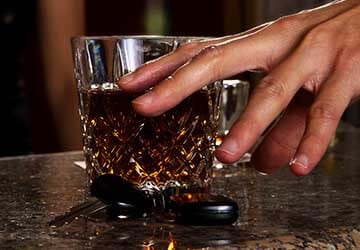DUI Defense Attorney in Columbia, SC
If you or a loved one has been arrested and charged with a DUI crime in Columbia, you need experienced Columbia DUI Lawyers who will fight to protect your rights. The Columbia DUI Lawyer at the Strom Law Firm, LLC, handles all criminal charges, practicing in courts throughout South Carolina, and we provide an aggressive and proactive DUI defense to every client we represent.
If you are charged with a DUI crime, you are innocent until proven guilty, which is a right guaranteed by our constitution. It becomes the state’s burden to prove your guilt beyond a reasonable doubt in a court of law. For experienced criminal defense attorneys who will fight for you and protect your rights, contact the Columbia DUI Lawyer at the Strom Law Firm, LLC today. Our SC law firm will use every resource at our disposal to help you get the best possible outcome in your DUI Charge.
We will initiate a private investigation into the allegations against you, examine every aspect of your DUI charge, and interview expert witnesses to strengthen your position and mount a solid defense. We offer a free consultation to discuss your arrest, possible defenses, and what you may be facing. Call our Columbia criminal defense attorneys today for a free consultation. 803.252.4800
What To Do After You Get Charged With A DUI in South Carolina
Imagine that you are driving down Assembly Street in downtown Columbia, South Carolina when you see blue lights behind you. You pull over in a safe location, and the officer approaches your vehicle. You hand him your driver’s license, registration, and proof of insurance when the question comes…”How much have you had to drink tonight?”
Has this ever been the case for you or someone you know? Being suspected of DUI can be a frightening experience for anyone in South Carolina, from the field sobriety tests to the breath test, to the suspension of your license. Contacting a qualified Columbia DUI Lawyer can help you navigate a DUI case.
The Initial Traffic Stop

The officer may not smell alcohol but may suspect you are driving impaired by a substance other than alcohol, such as prescription or OTC medication, or illegal drugs such as marijuana, cocaine, ecstasy, or methamphetamine.
Field Sobriety Tests
Field sobriety tests are performed roadside during a traffic stop when an officer suspects you of driving under the influence. These tests provide “clues” of impairment. If you show a sufficient number of “clues” indicating impairment, you may be arrested and charged with DUI.
The Breath Test (Datamaster DMT)
Once you are arrested under suspicion of DUI in South Carolina, you will be taken to jail and offered an opportunity to provide a breath sample.
If you provide a breath sample that is below a .15, you will be able to keep your license for the time, but could still lose your license if you are convicted of the DUI. If you provide a breath sample of .15 or higher, your license will be suspended for six months. You have the right to refuse to provide a breath sample. However, your refusal will result in the suspension of your license for six months. This suspension would be in addition to any suspension you might incur if convicted in a South Carolina court of the DUI charge.
If you blow above .15 or do not provide a sample, you can request an administrative hearing (also known as an Implied Consent Hearing) in SC to challenge the license suspension. The request for a DUI defense hearing will toll the suspension period until an order is entered after the administrative hearing is held at the Office of Motor Vehicle Hearings. Once a hearing is held, the suspension will either be rescinded or affirmed. If revoked, you will be eligible to reinstate your license at that time.
If affirmed, you must then serve the remainder of the suspension period previously tolled by your request for a hearing. You only have 30 days from the date of your DUI arrest to request an administrative hearing. If you fail to request this hearing for your charges, you forfeit the right to challenge your suspension. The experienced Columbia DUI lawyers at the Strom Law Firm can assist you through this DUI defense process.
The Penalties And Consequences
If you are convicted of a DUI in Columbia S.C., you may face several penalties, including jail time, fines, license suspensions, and other collateral consequences, such as increased auto insurance premiums. For example, if you are convicted of a DUI 1st offense, you face up to 30 days in jail or a fine of $400 plus court costs. Your driver’s license will also be suspended for six months.
You will need to enroll in ADSAP within 30 days of conviction and have your insurance company file a form SR-22 for 36 months. These penalties only increase with subsequent DUI convictions. For instance, with any DUI 2nd or above conviction, you may also be required to install an Ignition Interlock Device on your vehicle along with extended periods of the penalties described above.
Common DUI FAQs
I was arrested for DUI, but I had not been drinking at all. Will I be able to beat it?
According to the South Carolina DUI statute, it is unlawful for a person to drive while under the influence of alcohol, any other drug, or a combination of other drugs or substances, which can cause impairment to the extent that their faculties to drive a vehicle are materially and appreciably impaired. Not only is alcohol one of the substances listed, but this could include medications that have been mixed with alcohol or other substances, or can include driving while under the influence of illegal substances such as marijuana, cocaine, heroin, etc.
If a SC law enforcement officer believes you are driving impaired, he or she may ask you to perform field sobriety tests. Once he or she determines you are impaired, you will be asked for a breath sample. If the breath sample is refused or the sample provides a very low reading, the SC law enforcement officer may ask that you provide a urine or blood sample at the local hospital.
If you are arrested for DUI and believe that you were not drunk driving, you should contact a DUI attorney immediately. The earlier we start working on your DUI defense case, the better we will be able to fight the DUI charges against you. Contact our Columbia DUI Lawyers today at (803) 252-4800 for a free consultation.
Should I consent to a field sobriety test in Columbia?
You have the right to refuse to submit to any testing that the South Carolina law enforcement officer requests. You can refuse to perform the field sobriety tests, but this will not prevent you from possibly being arrested for a DUI offense. You can also refuse to provide a breath, blood, or urine sample (as discussed above), but you may have your SC license suspended for doing so. You should seek the advice of an experienced Columbia DUI Lawyer.
Can I still drive in South Carolina if I didn’t take a breathalyzer test?
You have 30 days to request an administrative hearing. This request is accomplished by filling out the back of the Notice of Suspension form and turning it into the Office of Motor Vehicle Hearings Officer in South Carolina with a $200 fee. Once you do this, the SC Office of Motor Vehicle Hearings will email you a date for your administrative hearing. This form also goes to the South Carolina Department of Motor Vehicles. You will be notified of your eligibility to apply for a Temporary Alcohol License (TAL), and you will then be able to drive legally within the state of South Carolina.
What is ADSAP?
ADSAP stands for Alcohol and Drug Safety Action Program and is a statutorily mandatory alcohol class offered through DAODAS and locally through LRADAC. Individuals convicted of DUI or DUAC in South Carolina are required to enroll in ADSAP within 30 days from the date of the conviction. The initial assessment and enrollment cost $500, and the program will cost up to $2,000 for individualized treatment services. However, if you are unable to pay the costs for treatment, they do allow the completion of 50 hours of community service in lieu of payment.
The time to complete the program varies as each case is handled on an individual basis. Those convicted of a DUI offense will not be eligible for a provisional license or to have their regular license reinstated until they can show proof of application or completion of the ADSAP program to the South Carolina Department of Motor Vehicles.
In terms of the administrative suspensions for the refusal to provide a breath sample or providing a breath sample that requires the suspension of a driver’s license, a person must only show proof of enrollment into ADSAP in order to have their driving privileges reinstated. You must submit this to the Department of Motor Vehicles within 30 days of the issuance of an unfavorable order from the Office of Motor Vehicle Hearings.
What is SR-22 insurance?
SR-22 is a form and not a type of insurance. This form proves the driver has the required liability amounts to the Department of Motor Vehicles. Form SR-22 is required for persons convicted of a DUI, DUAC, or a 2nd Reckless Driving conviction within five years. You are required to have the SR-22 for three years. Having an SR-22 requirement may cause your insurance premiums to increase significantly.
What is an IID (Ignition Interlock Device), and do I have to install one after a South Carolina DUI conviction?
The Ignition Interlock Device is a breath test mechanism attached to your vehicle’s motor, which will only allow the car to start once you provide a breath sample below a certain threshold. The device is meant to help prevent drunk driving. The device is also set up to periodically require you to breathe again to prevent others from blowing in the device for you.
If you do not submit to the test, the event will be logged in the IID’s memory, and alarms will go off until you stop the car. The device should be installed in all vehicles that you drive. An IID is not required for every DUI conviction. The experienced DUI attorneys at the Strom Law Firm can advise you on whether an IID is required in your drunk driving case.
This is my first DUI charge, and I have never been arrested before. Does this matter?
While having a clean criminal history is always a positive, there is no option for Pretrial Diversion or PTI with DUI charges. The most efficient way to obtain the best result in your case is to contact a qualified Columbia DUI attorney.
What is a South Carolina DUAC charge, and how is that different than a DUI?
DUAC stands for Driving with an Unlawful Alcohol Concentration. The penalties for a DUI and a DUAC in South Carolina are exactly the same; therefore, if you are convicted of DUAC, your South Carolina license will be suspended, you must enroll and complete ADSAP, and you must obtain SR-22.
Can I get a DUI conviction removed from my criminal record?
No, a DUI conviction can never be removed from your South Carolina driving record through an expungement. This is one of the most devastating aspects of being charged or convicted of a DUI offense in South Carolina. Contact the Strom Law Firm today if you or someone you know has been charged with a DUI to avoid having this type of conviction follow you for the rest of your life.
Contact the Columbia DUI Lawyers at the Strom Law Firm today
The DUI Lawyers at the Strom Law Firm are well-equipped to handle the ins and outs of a DUI or DUAC charge. We are well-versed in the aspects required to defend these drunk driving charges and are aware of the rules that law enforcement officers must follow in order to be successful in their pursuit of a conviction. Call the Strom Law Firm today at (803) 252-4800 to schedule a free consultation with a DUI attorney.


















